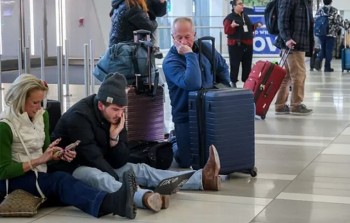Who Was America's 'Secret' Female President
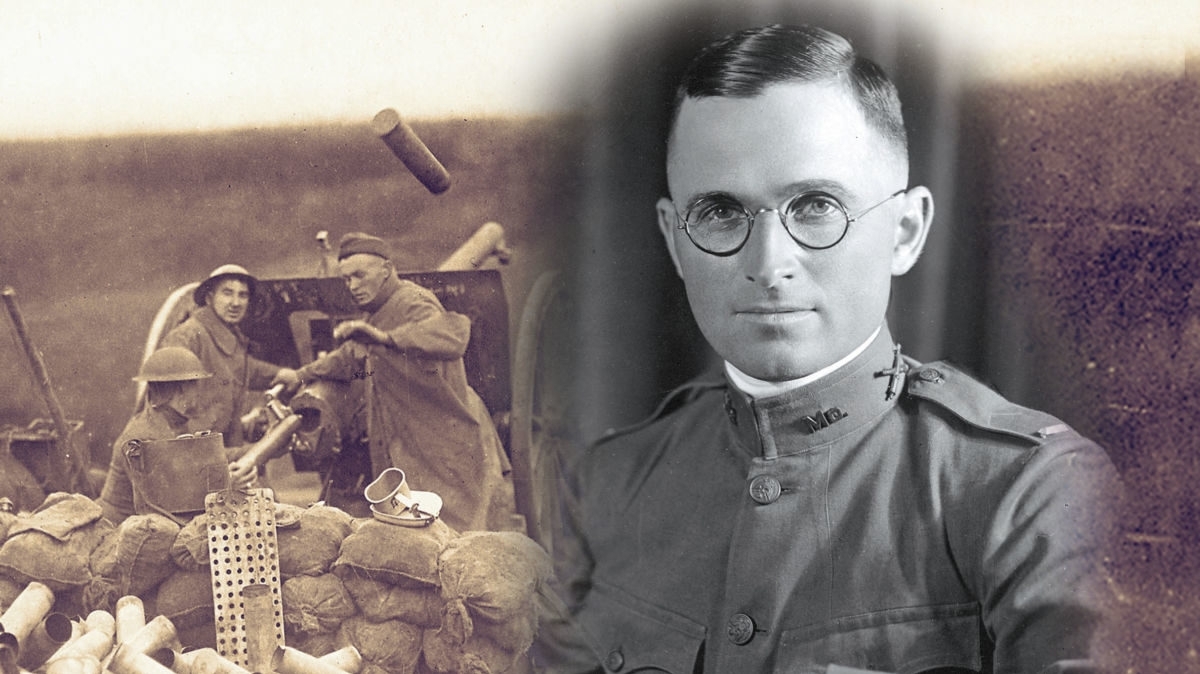 Which US Presidents Were Never Elected? Which US Presidents Were Never Elected? |
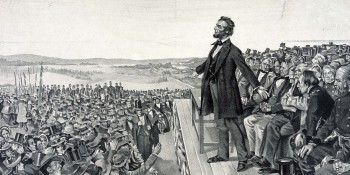 Top 20 Greatest Speeches by US Presidents of All Time Top 20 Greatest Speeches by US Presidents of All Time |
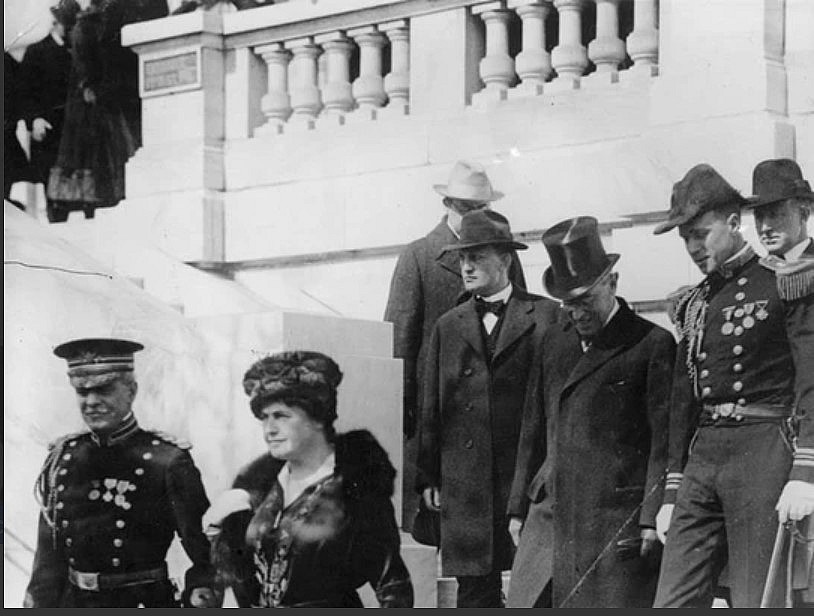 |
| Mrs. Edith Wilson replaced her husband to run the country for 17 months |
First Lady of a "workaholic" President
Because of their strong attraction, President Woodrow Wilson and Edith were rarely apart. Mr. Wilson frequently invited his wife to sit with him as he reviewed important documents. Some of them are top-secret and military-related. He even allowed his wife to be present during important meetings with his advisers.
In addition to presidential affairs, Edith's main concern was her husband's health and comfort. She showed little interest in politics, except when it came to her husband.
As First Lady during World War I, Edith set an example by following all of the prohibitions imposed on the American people to save money during the war: "No Gas Sunday," "No Gas Sunday," and "No Gas Sunday". "Two do not eat meat," and "Fourth do not eat wheat."
In keeping with federal policies, she allowed sheep to graze on the White House lawn rather than using lawn mowers. She even auctioned wool made from sheep's wool to benefit the American Red Cross.
Mrs. Edith also made history as the first First Lady to visit Europe while working at the White House. She is qualified to be the official hostess of the White House.
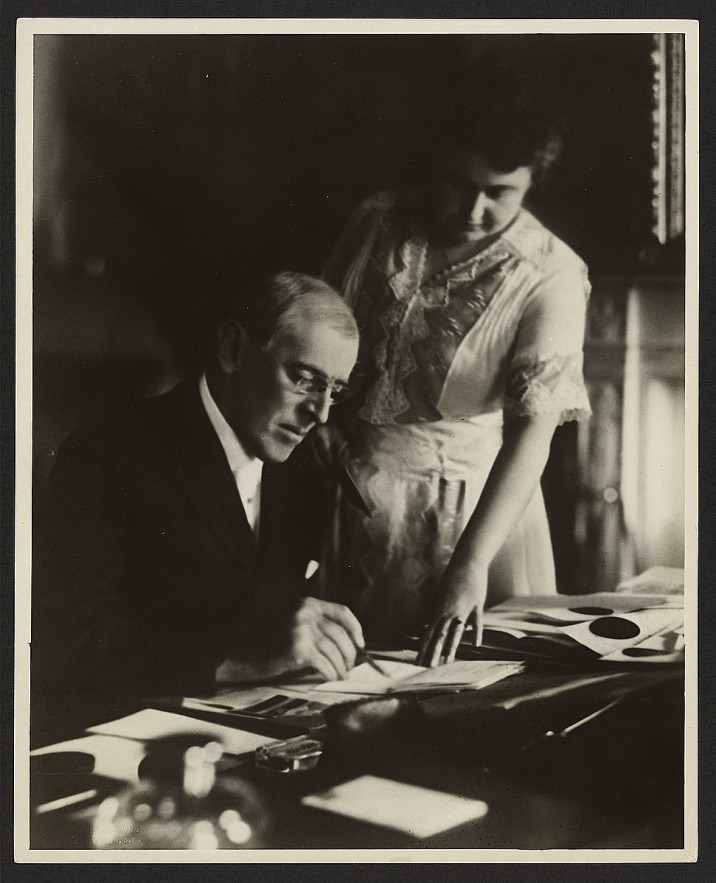 |
| President Woodrow Wilson sits at his desk as Edith Bolling Galt stands next to him in 1920. Photo: Library of Congress |
However, the social aspect of President Wilson's administration was overshadowed by the European war. She completely stopped these activities after America officially entered the war in 1917.
Edith integrated her own life with her husband's, attempting to keep him healthy despite extremely stressful circumstances. She accompanied her husband to Europe, where the Allies met to discuss peace terms. She and her husband visited Europe twice, in 1918 and 1919, to address soldiers and sign the Treaty of Versailles. Her presence among European female royals contributed to America's status as a world power and elevated the First Lady's profile in international politics. She was charming, well-spoken, and widely respected.
For his part, President Woodrow Wilson may have been one of America's most hardworking presidents. In the fall of 1919, he gave the best demonstration.
From late December 1918 to June 1919, the 28th President of the United States spent the majority of his time in Europe negotiating the Treaty of Versailles and planning for the newly formed League of Nations, for which he received the Nobel Peace Prize in 1919. However, in the United States, ratification of the Treaty of Versailles elicited mixed reactions and was strongly opposed by Republican senators as well as Irish Catholic Democrats. As the summer progressed, President Wilson became increasingly concerned about defeat.
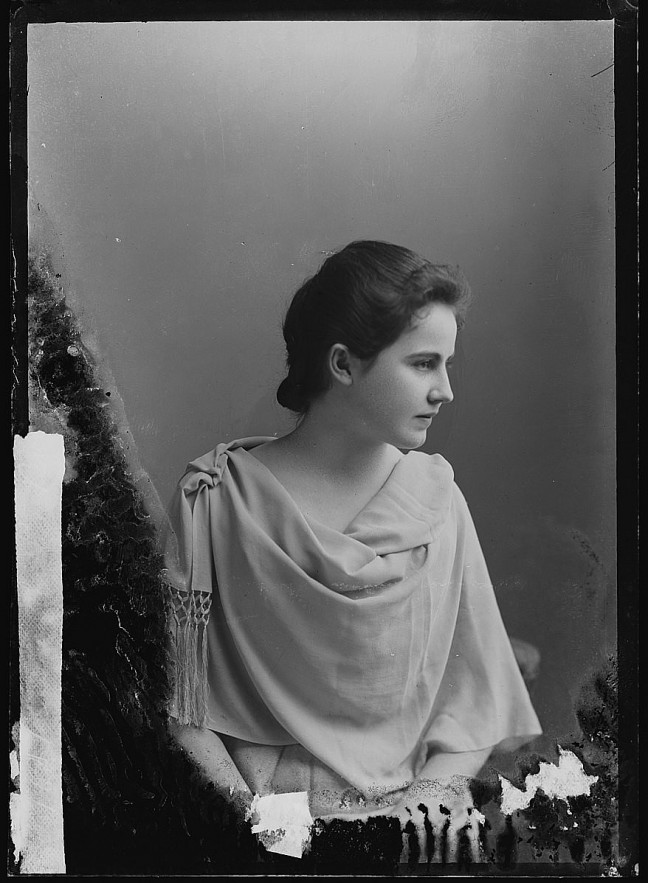 |
| Edith Wilson. Photo: Library of Congress |
Tired but determined to achieve peace, Woodrow Wilson embarked on a speaking tour across the United States on September 3, 1919, to directly present his views to the American people. For the next three and a half weeks, President Wilson, his wife, aides, waiters, cooks, Secret Service agents, and members of the press traveled across America via train. The presidential carriage with the strange name Mayflower served as a mobile White House. Mr. Cary T. Grayson, the president's personal physician, also accompanied the group and expressed concern about President Wilson's health.
Mr. Woodrow Wilson was in poor health before embarking on this long and exhausting journey. When Mr. Wilson took office, a prominent physician named Silas Weir Mitchell predicted that the President would never serve his first term. Dr. Weir's prognosis was incorrect, despite the fact that Dr. Grayson frequently expressed concern about President Wilson's tendency to overwork.
For example, while negotiating with European leaders about achieving a just peace to end the "Great War," Mr. Wilson worked nonstop, skipping all exercise, entertainment, and relaxation sessions from his schedule. In early April 1919, the US President contracted a terrible flu, as did tens of millions of others during the worst pandemic in human history.
In September 1919, the presidential train traveled through the Midwest, into the Great Plains states of North America, over the Rockies into the Pacific Northwest, and down the West Coast before returning. East, President Wilson grew thinner, paler, and weaker than ever. He lost his appetite, his asthma worsened, and he complained of persistent headaches.
Unfortunately, Woodrow Wilson continued to refuse to listen to his body. He has a lot of important things to do. With his considerable skills as a professor, historian, political scientist, orator, and politician, he set out to persuade skeptics and a variety of groups of the importance of ratifying the Treaty of Versailles and joining the League of Nations. At several stops, outspoken opponents shouted and protested his proposals. Political opponents in the Senate criticized President Wilson's foreign policy, claimed that the treaty limited the US Congress's ability to declare war, and ultimately voted to reject the treaty.
Mrs. Edith discovered her husband was seriously ill late in the evening of December 25, 1919, after he had given a speech in Pueblo (Colorado). His facial muscles twitched uncontrollably, and he felt severe nausea. Earlier that day, the President complained of a splitting headache.
Six weeks after the aforementioned incident, Dr. Grayson told a journalist that he had noticed the President's mouth drooping and strangely loose on the left side, a warning sign that could no longer be ignored. In retrospect, this event could have been a transient ischemic attack. This is the medical term for a temporary loss of blood flow to the brain, also known as a "mini-stroke," which can be a precursor to a much more serious cerebrovascular event later. In other words, a full stroke.
On September 26, the President's private secretary, Joseph Tumulty, announced that the remaining speaking tour dates had been canceled due to the President's gastrointestinal nervous reaction. The Mayflower sped back to Union Station in Washington. When the President arrived on September 28, he appeared ill but was still able to walk around the station by himself. He tipped his hat to the waiting crowd, shook hands with several people on the platform, and was led by a team of doctors to the White House for mandatory rest and examinations.
Everything changed on the morning of October 2, 1919. According to some, President Wilson awoke to find his left hand numb before losing consciousness. According to another record, Mr. Wilson suffered a stroke while going to the bathroom and fell to the floor, forcing Mrs. Edith to pull her husband back into bed. Regardless of how the incident occurred, after Mr. Wilson collapsed, Mrs. Edith secretly called a White House employee, Ike Hoover, and instructed him to contact Dr. Grayson immediately because the President was ill. heavy.
Doctor Grayson quickly approached President Wilson. Ten minutes later, he emerged from the President's bedroom, and the doctor's diagnosis was devastating: "My God, the President is paralyzed.".
Most Americans today are surprised to learn that the entire affair, including President Wilson's prolonged illness and permanent disability, was kept secret. In recent years, the discovery of his personal physician's clinical notes from the time of President Wilson's illness confirmed that his stroke had left him severely paralyzed on the left side and partially blind in one eye. Yes, along with the emotional disorders that come with life-threatening illness, particularly when suffering from brain-related diseases. Mr. Wilson developed a urinary tract infection a few weeks after his stroke, putting his life in danger. Fortunately, the President's body was strong enough to withstand the infection, but he also contracted another flu in January 1920, further compromising his health.
Can the President lead the country while in such poor health?
Decisions that Change History
Staff, cabinet members, and members of Congress were not permitted to meet with President Wilson. On December 5, Mr. Wilson and Mrs. Edith attempted to hide his paralysis by covering his left side with a blanket during a brief meeting with Senators Gilbert Hitchcock and Albert Fall. Senator Fall, one of the President's most formidable political opponents, told him, "I hope you believe I am sincere." I've been praying for you, sir.
Mrs. Edith later recalled that her husband was well enough to make a joke: "Like what, Senator?"
Perhaps this is a good story, but President Wilson's biographer, John Milton Cooper, Jr., doubts its authenticity. He claimed that neither Edith nor Dr. Grayson had recorded such a clever response in their written memos that day.
By February 1920, the press was reporting on the President's stroke. However, the American people did not fully understand President Woodrow Wilson's condition or his wife's management of his affairs at the time.
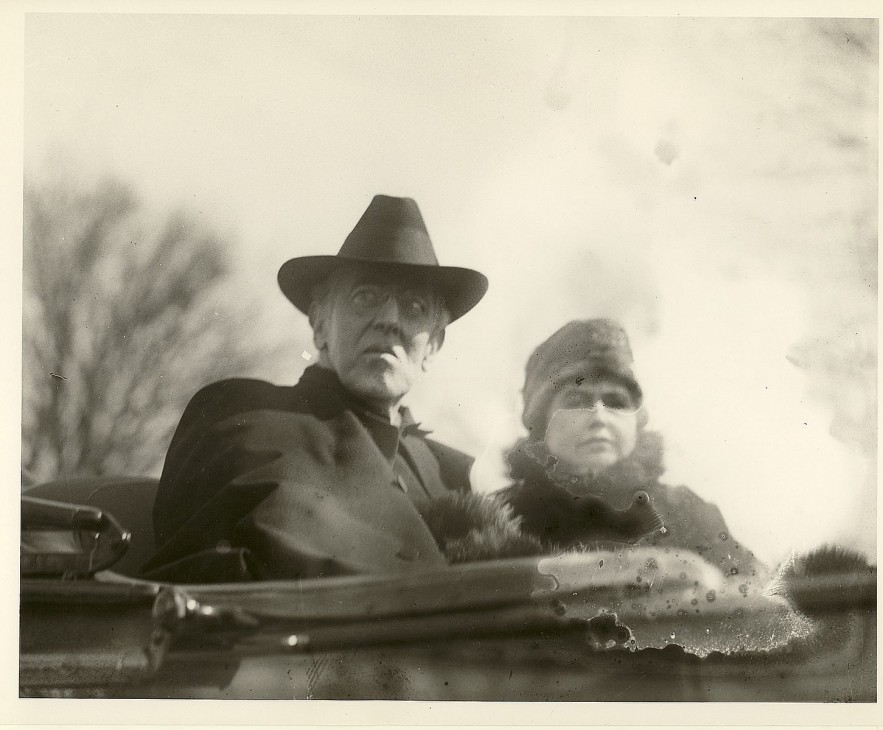 |
| President Wilson and Mrs. Edith |
The problem was that in 1919, there were still no clear instructions in the constitution on how to transfer presidential powers when the country's leader was seriously ill. Clause 6 of Section 1 of Article II of the US Constitution addresses the issue of presidential succession as follows: "In the event of the president's removal from office or his death, resignation, or inability to exercise his powers and duties, the powers and duties shall be vested in the vice president; and by law, in the event of the removal, death, resignation, or incapacity of both the president and the vice president, the shall declare which official shall
But, of course, President Wilson was not dead and refused to resign because of his health. As a result, Vice President Thomas Marshall refused to take office until Congress passed a resolution stating that the position was indeed vacant and only after Mrs. Wilson and Dr. Grayson certified in writing using the language required by the Constitution that the president was unable to carry out the powers and duties of his office. There has never been such a resolution.
In fact, it wasn't until 1967 that the 25th Amendment to the United States Constitution was ratified, which establishes a more specific method of transferring power when the president dies or becomes disabled. Many scholars who study presidential health continue to argue that the 25th Amendment is insufficiently clear about presidential succession and requires revision, particularly in the context of 21st century medicine. Despite serious illnesses, survival rates are improving.
Edith Wilson insisted for the rest of her life that her husband continue to perform all presidential duties after his stroke. As she later stated in her 1938 autobiography "My Memoirs," "So I began my administrative work; I studied every paper that was sent from ministers or senators." Congressman, while also attempting to understand and briefly present the issues that must be addressed to the President. I have never made a single decision involving the resolution of public affairs. My only decision is what is important and what is not, and when to bring it up with my husband."
Historians have spent the last century delving into the inner workings of President Wilson's administration, and it is clear that Edith Wilson was more than just a "administrator." She effectively ran the country until her husband's second term expired in March 1921.
Ms. Edith spoke and acted on behalf of the President. She manages the President's Office. Most historians today agree that this work influenced both domestic and international policy in the United States at the time.
Edith spent nearly three years determining which correspondence and national issues were important enough to pique the bedridden President's interest. She also decides which issues will be assigned to cabinet members to resolve. She accomplished all of this while keeping her husband's condition a secret from Vice President Thomas Riley Marshall.
Perhaps most notably, Edith worked behind the scenes to ratify the Treaty of Versailles. This is a peace treaty signed on June 28, 1919, that ended hostilities between Germany and the majority of the Allied powers.
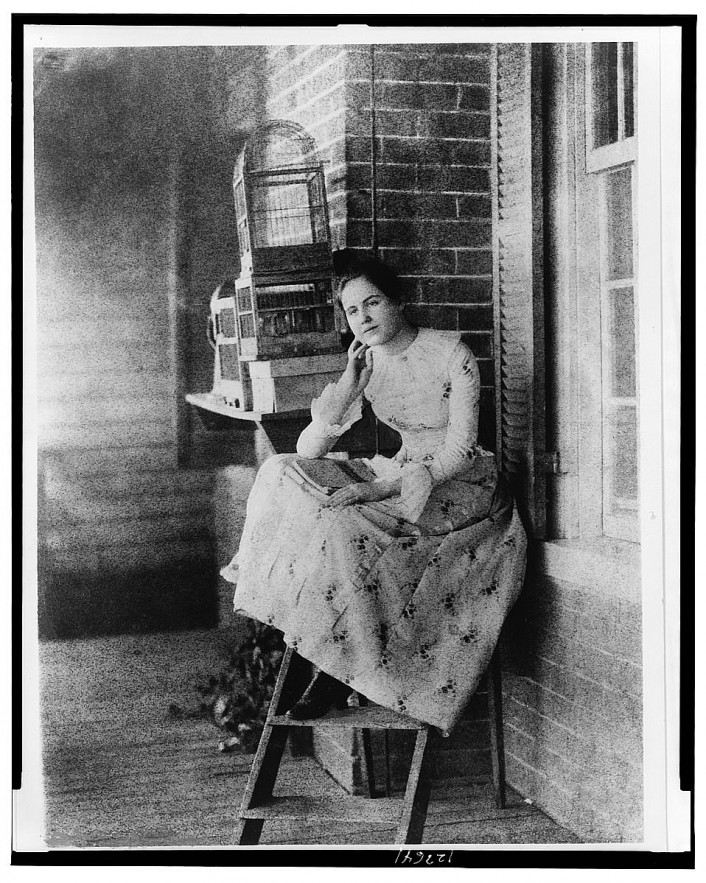 |
| Portrait of Edith at age 15, 1887 |
This treaty has never been ratified by the US. Importantly, it contributed to the formation of a separate peace treaty with Germany.
Nearly three years later, on Sunday, February 3, at 11:15 a.m., President Woodrow Wilson died at home in Washington, D.C.
According to The New York Times on February 4, the former president spoke his final words on Friday, February 1: "I am a broken machine. When the machines fail, I'm ready." And on Saturday, February 2, he said his final words: Edith.
Even though Mrs. Edith never officially held this position, October 2, 1919 can be considered the first time in American history that a woman was elected president.
Until her death, former First Lady Edith Wilson insisted that she had never wielded full presidential power. She claimed she was only using certain privileges on behalf of her husband.
However, in recent years, scholars have become more critical of Edith Wilson's tenure as First Lady. Now they can consider the long-term consequences of her tenure as "secret president."
According to historian Phyllis Lee Levin, President Woodrow Wilson's policies were made less effective by his wife. This historian described Mrs. Edith as "a woman with narrow views and fierce determination."
Other critics argue that Edith underestimated her own role in her husband's presidency. Although she did not make major decisions, she had an impact on both domestic and international policy. She helps determine which issues require her husband's attention. She prioritizes these issues based on her personal values and political understanding.
Similarly, medical historian Howard Markel observes that Edith effectively ran the country until her husband's second term expired in March 1921.
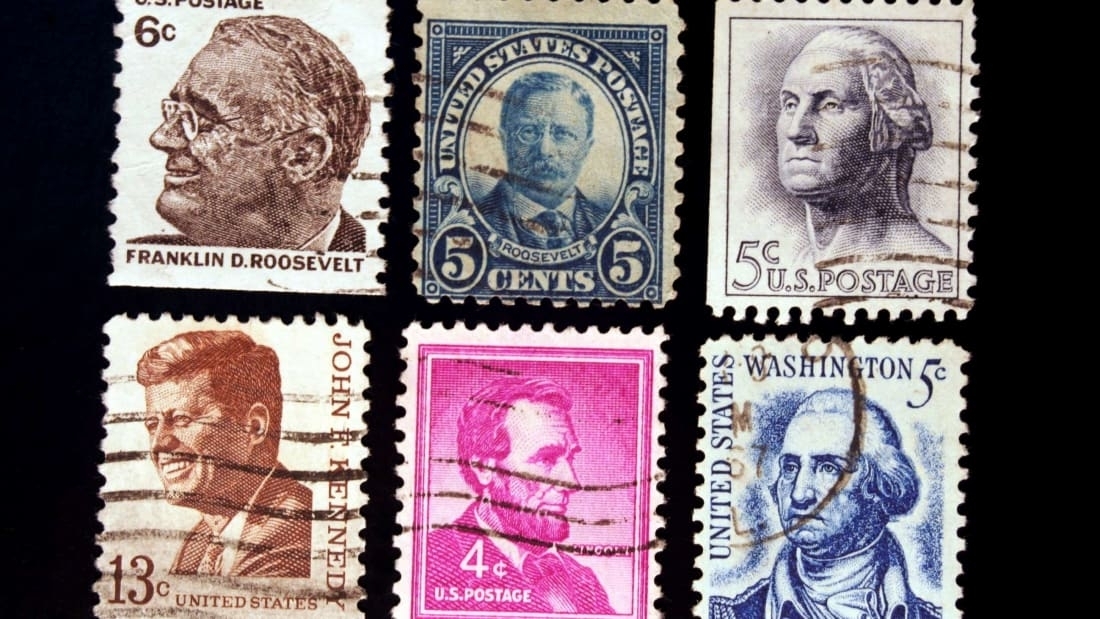 How Many Presidents Are In The United States? Full List and Interesting Facts How Many Presidents Are In The United States? Full List and Interesting Facts The US has 46 Presidents so far. Who are they and how long did they serve? |
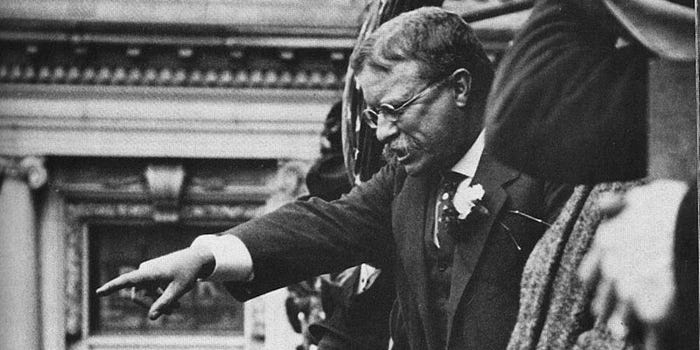 How Many US Presidents Have Been Assassinated? How Many US Presidents Have Been Assassinated? In American history, four out of 45 US presidents have been assassinated. However, many more presidents have escaped attempts on their lives, including Andrew Jackson, ... |
 Top 20 Greatest Speeches by US Presidents of All Time Top 20 Greatest Speeches by US Presidents of All Time Presidents are often very good at using the art of language to motivate, caution, reassure, and guide the American people. Let's take a look at ... |
 Who are the Youngest & Oldest U.S Presidents - Top 5 Who are the Youngest & Oldest U.S Presidents - Top 5 There have been 46 US presidents in total since the nation's founding. Which of these is the President who is currently the youngest and the ... |

















